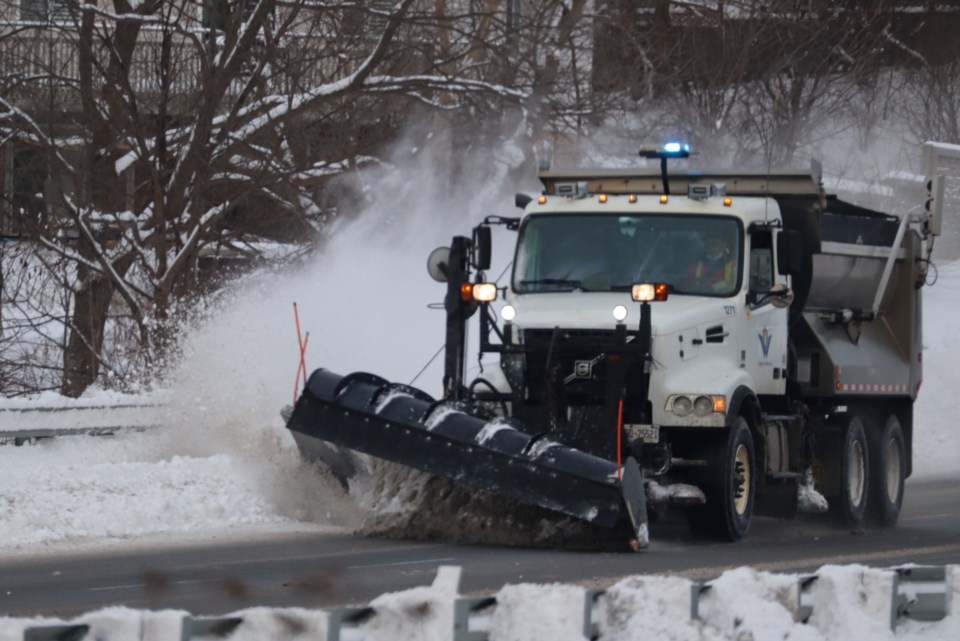The drinking water supply in the city of Cambridge has higher levels of sodium than recommended by Health Canada according to regular water quality reports taken by the region.
The Region of Waterloo website states that regular sodium levels in drinking water should be below 20 mg/L. Anything higher must be reported to public health.
A major cause of the increase is the way roads are treated and the type of salt that is used over the winter months. It's an issue the region is working on.
“We have elevated salt in our drinking water supply water,” Eric Hodgins, manager of hydrogeology and water programs for the Region of Waterloo said.
“We’ve been advocating for the protection of the environment and drinking water.”
It's important to note that the 20 mg/L threshold is a low bar, Hodgins says.
It’s primarily a concern for people who suffer from severe hypertension, congestive heart failure or are on a sodium-restricted diet.
Doctors are made aware when the levels pass the threshold and know to advise patients who would need to consider water sodium levels when it comes to their overall daily intake.
“Everybody should be considering the sodium levels if they need to be concerned,” Hodgins said.
“We’re required to report it to public health. The doctors know in Cambridge that the water is likely exceeding the health threshold because it’s fairly low.”
The region is working on ways to limit the amount of salt that is used on roadways, including the use of a liquid form that requires a lot less volume. The liquid is something the city is already using where possible as rock salt loses it’s effectiveness when it's colder than seven or eight degrees below freezing. Occasionally the city, who is responsible for laying the salt, will use a sand and salt mixture for freezing rain events but that can have negative impacts on storm sewers in urban environments.
“We want to increase the use of this liquid form,” Hodgins said.
“If you put it on in advance of a storm as anti-icing, you’re putting less on the road because when the snow falls, it’s already there. If you’re putting rock on snow, it needs to make it’s way through to the road, as it’s going it’s melting but it needs to get to the pavement. You have to put more on to get it to the road surface. The rock crystals isn’t what melts the ice, the rock has to come in contact with water that breaks crystals down in liquid forms.”
The other issue is cost. Rock salt is the cheapest and the liquid alternative requires the rock to be processed and broken down.
“The mines pump out rock salt and that then needs to be made into the liquid,” Hodgins said.
“It’s not feasible for us to tell transportation to stop putting rock salt down. It’s not an argument we can win, but we can reduce. The liquid form can reduce total output by about half, we've seen it on private parking lots and pilots that have been done.”
The cost increase doesn’t stop with the processing, as different trucks are required to spread a liquid than what are used to spread the crystals.
On top of the need for some residents to be cautious about the sodium levels in the water, salt being pumped into the environment is a hazard for animals and other creatures.
Water Canada points out that excess salt gets washed away into streams and lingers in the soils, groundwater and storm water ponds.
Birds can eat salt crystals, resulting in dehydration and death. For aquatic animals and organisms, high levels can result in decreased size, limit their ability to reproduce and in high enough concentrations can be lethal.
Many plants and trees also can’t grow if the conditions are too salty.
It’s currently a tough spot for the region to be in as they grapple with cost, the importance of safety in the form of clear roadways in the winter and managing health concerns and the environment.
What they can’t control is the use of salt on private properties and parking lots, where an excess is often spread due to liability concerns for the owners.
“The parking lots are a totally different issue because there’s no standard they have to meet, they're all operated different based on the contractor,” Hodgins said.
“There's so much more over-application on parking lots. They don’t have the same traffic so they need to put more down to achieve the same outcome. What were seeing is a really significant over application.”
Despite the obstacles, Hodgins is confident there is a solution.
“We’re trying to find out cost differences in our pilot projects of liquid versus rock salt,” he said.
“Our roads team is moving in the right direction.”
